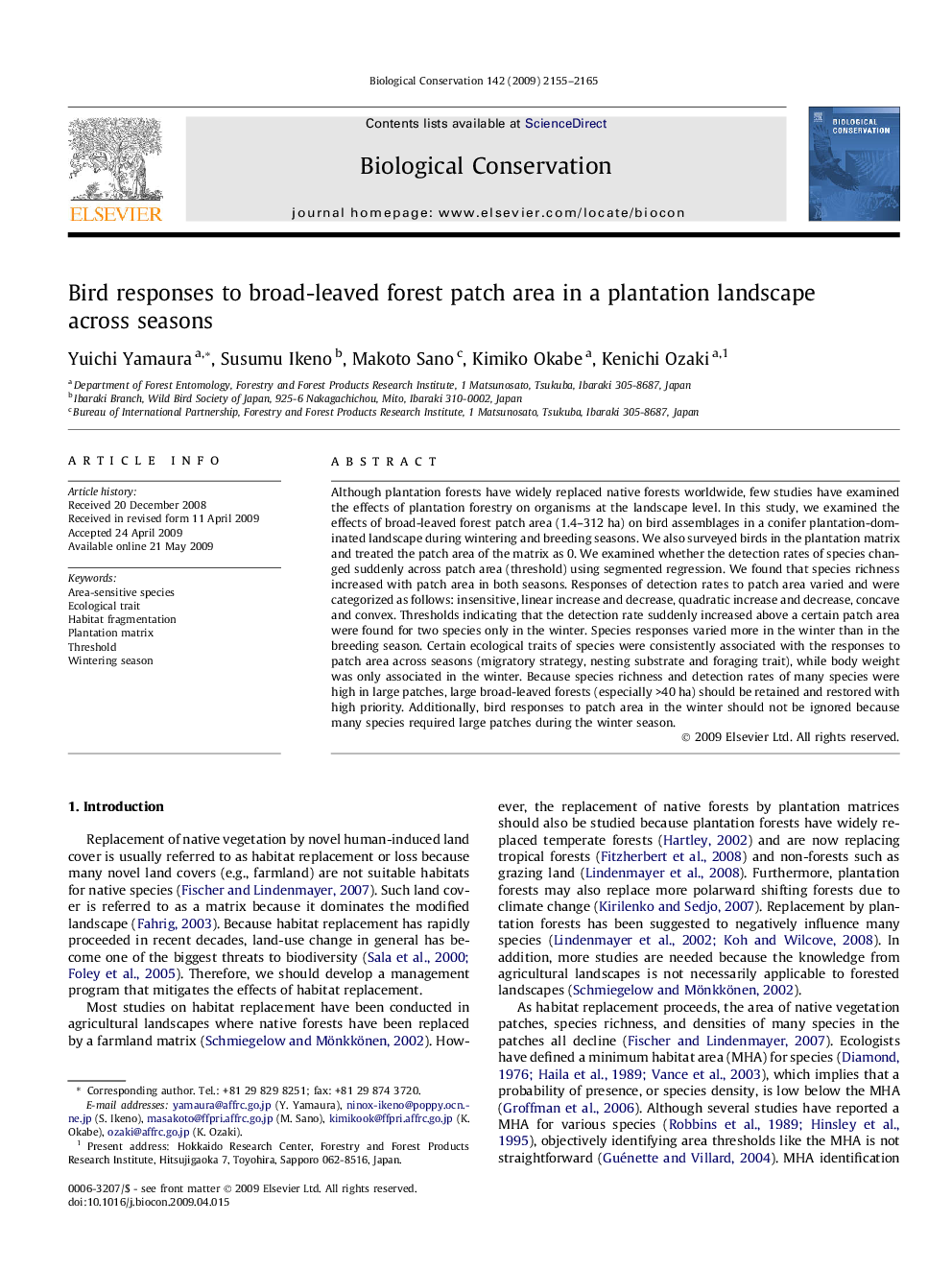| Article ID | Journal | Published Year | Pages | File Type |
|---|---|---|---|---|
| 4386211 | Biological Conservation | 2009 | 11 Pages |
Although plantation forests have widely replaced native forests worldwide, few studies have examined the effects of plantation forestry on organisms at the landscape level. In this study, we examined the effects of broad-leaved forest patch area (1.4–312 ha) on bird assemblages in a conifer plantation-dominated landscape during wintering and breeding seasons. We also surveyed birds in the plantation matrix and treated the patch area of the matrix as 0. We examined whether the detection rates of species changed suddenly across patch area (threshold) using segmented regression. We found that species richness increased with patch area in both seasons. Responses of detection rates to patch area varied and were categorized as follows: insensitive, linear increase and decrease, quadratic increase and decrease, concave and convex. Thresholds indicating that the detection rate suddenly increased above a certain patch area were found for two species only in the winter. Species responses varied more in the winter than in the breeding season. Certain ecological traits of species were consistently associated with the responses to patch area across seasons (migratory strategy, nesting substrate and foraging trait), while body weight was only associated in the winter. Because species richness and detection rates of many species were high in large patches, large broad-leaved forests (especially >40 ha) should be retained and restored with high priority. Additionally, bird responses to patch area in the winter should not be ignored because many species required large patches during the winter season.
